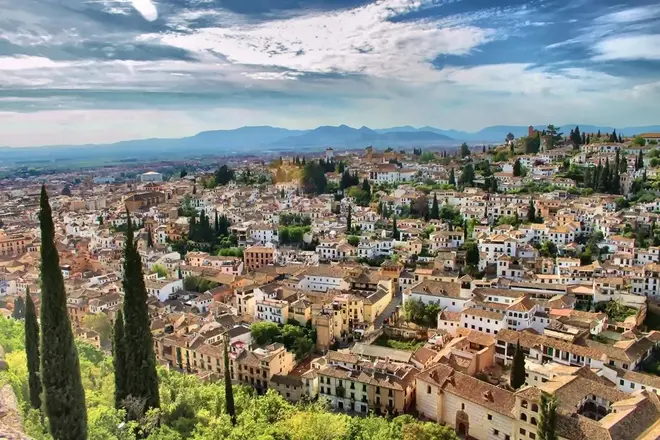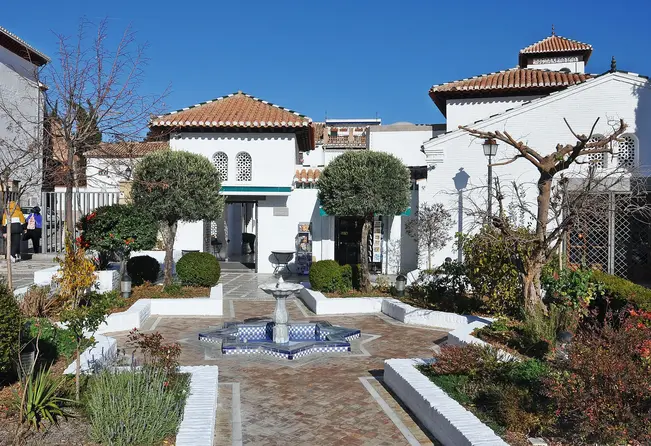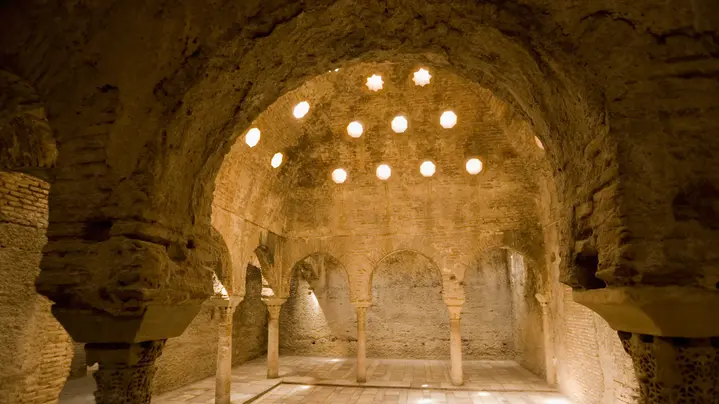




Andalusian Granada, between water and marble
Tour description
Welcome to our fascinating guided tour of Granada ! Today, we invite you to discover some of the most iconic corners of this ancient city, a living heritage of al-Andalus. We'll stroll through the historic Albaicín neighborhood, admiring the Islamic architecture, hydraulic systems, and palatial spaces that define the soul of Andalusian Granada.
We begin our tour at Elvira Gate , the majestic gateway to the 11th-century Muslim city. This imposing Zirid structure welcomes us on a journey back in time, marking the entrance to the old medina.
Nearby, we can see the Zirid Wall , a vestige of the defensive system of Islamic Granada. Its walls and towers speak of a time when the city was beginning to establish itself as the capital of a kingdom.
The next stop is the Dar al-Horra Palace , the residence of Queen Aixa, Boabdil's mother. Its sober Nasrid elegance conveys the intimacy of palace life and the sophistication of the late Andalusian period.
We enter an urban oasis: Carmen de los Geranios , an example of a typical Granada carmen. Inside, you'll find the Max Moreau Museum, but from outside, its gardens and views invite tranquility.
We continue to the Great Mosque of Granada , built in 2003. Its Andalusian aesthetic and location in the Albaicín connect us with the spiritual legacy of Islam, also offering an unparalleled panoramic view of the Alhambra.
We descend toward the Aljibe de Trillo , an 11th-century water reservoir. This small but vital element reveals the importance of water in Islamic Granada, where every corner was integrated into an efficient and silent hydraulic network.
We continue on to the Casa de Zafra , a Nasrid house converted into an Albaicín interpretation center. Its structure and decoration allow us to understand what daily life was like inside Muslim homes.
The route continues with the enigmatic Maristan , a hospital founded by Muhammad V in the 14th century. Although only its foundations remain, this space was a pioneer in Islamic medicine on the Iberian Peninsula.
We now stop at El Bañuelo , the best-preserved Arab baths in al-Andalus. Entering this space (even if only visually from the outside) is a glimpse of the social, ritual, and therapeutic importance of water in Muslim life.
And finally, we look up at the Alhambra , the architectural jewel that crowns this experience. From the Albaicín, its towers, walls, and palaces define the horizon, reminding us that Granada was one of the last refuges of Andalusian splendor.
Throughout this route, we'll offer you an in-depth look at the history, architecture, and culture that have shaped Granada's identity. We hope you enjoy this tour as much as we enjoyed designing it for you. Welcome to Andalusian Granada, where water and marble still whisper stories of the past!
What will we see on this tour?




